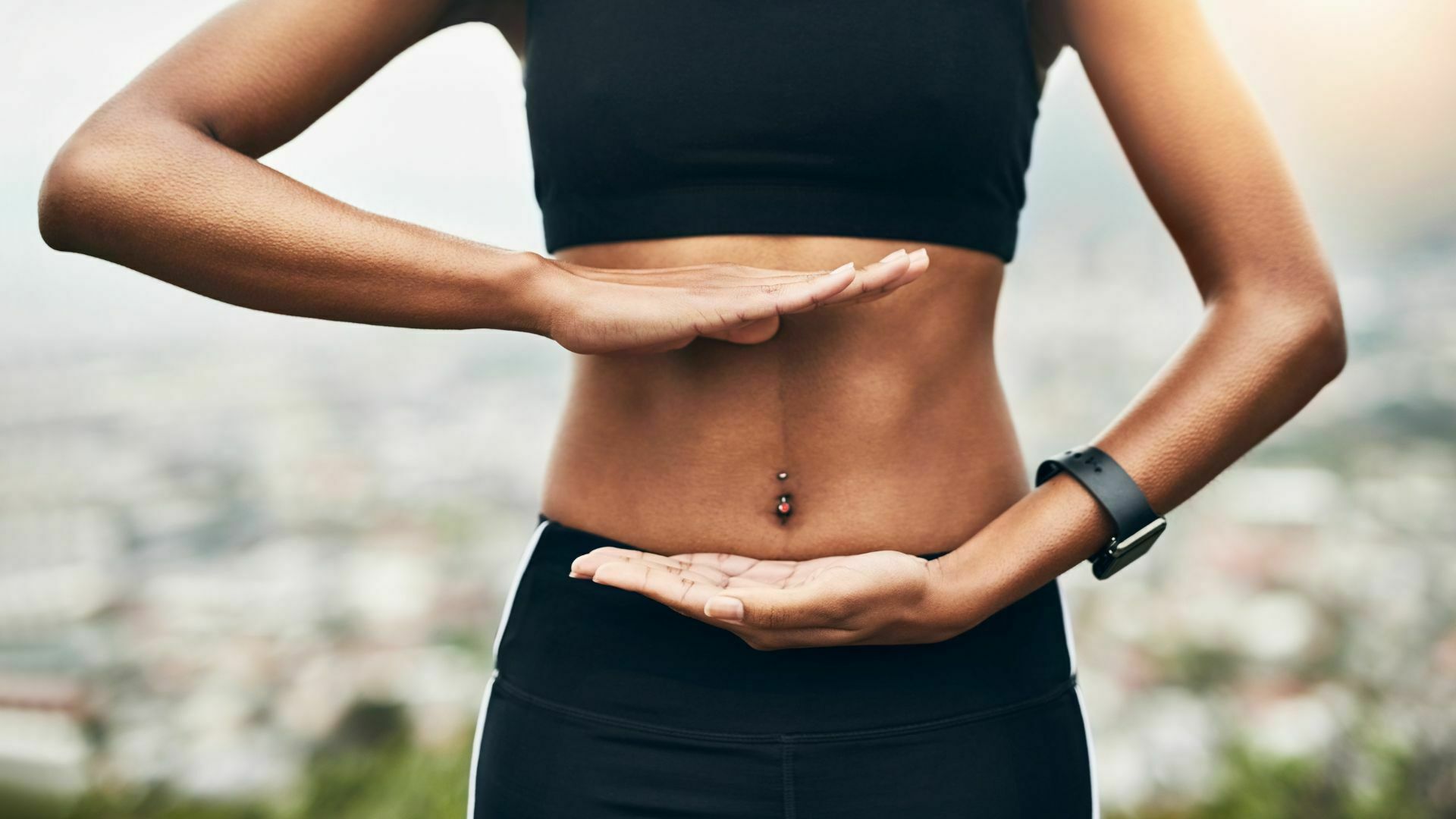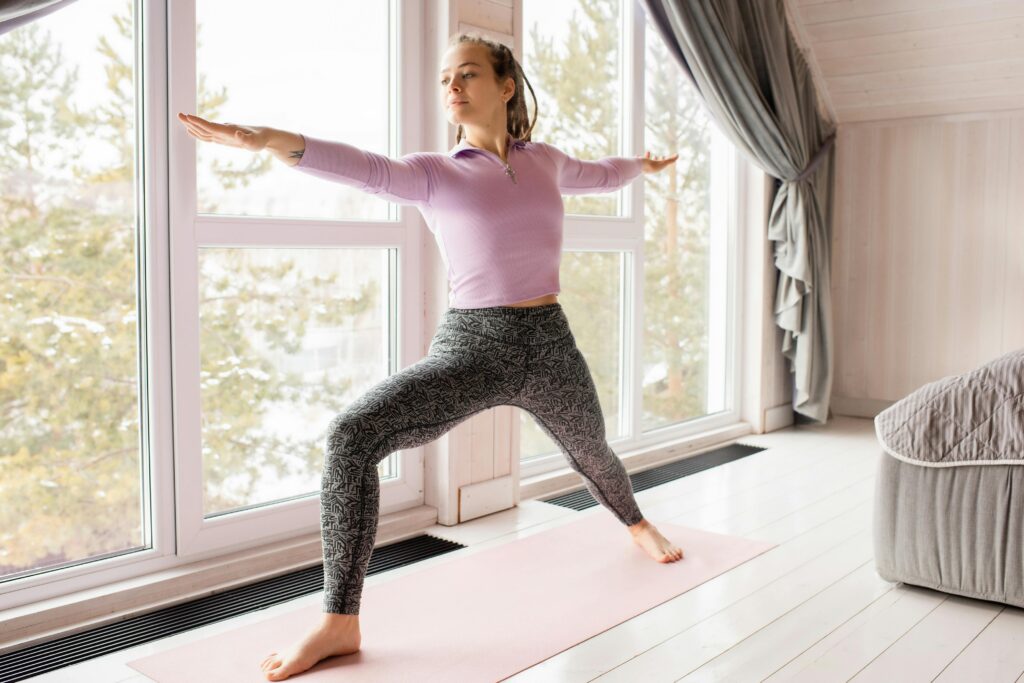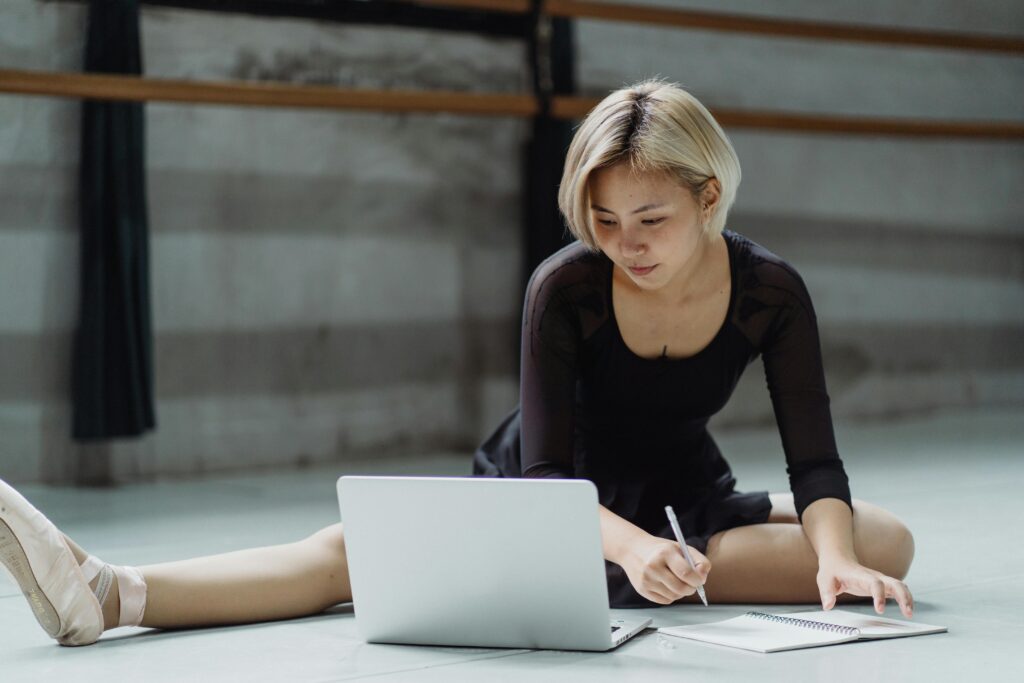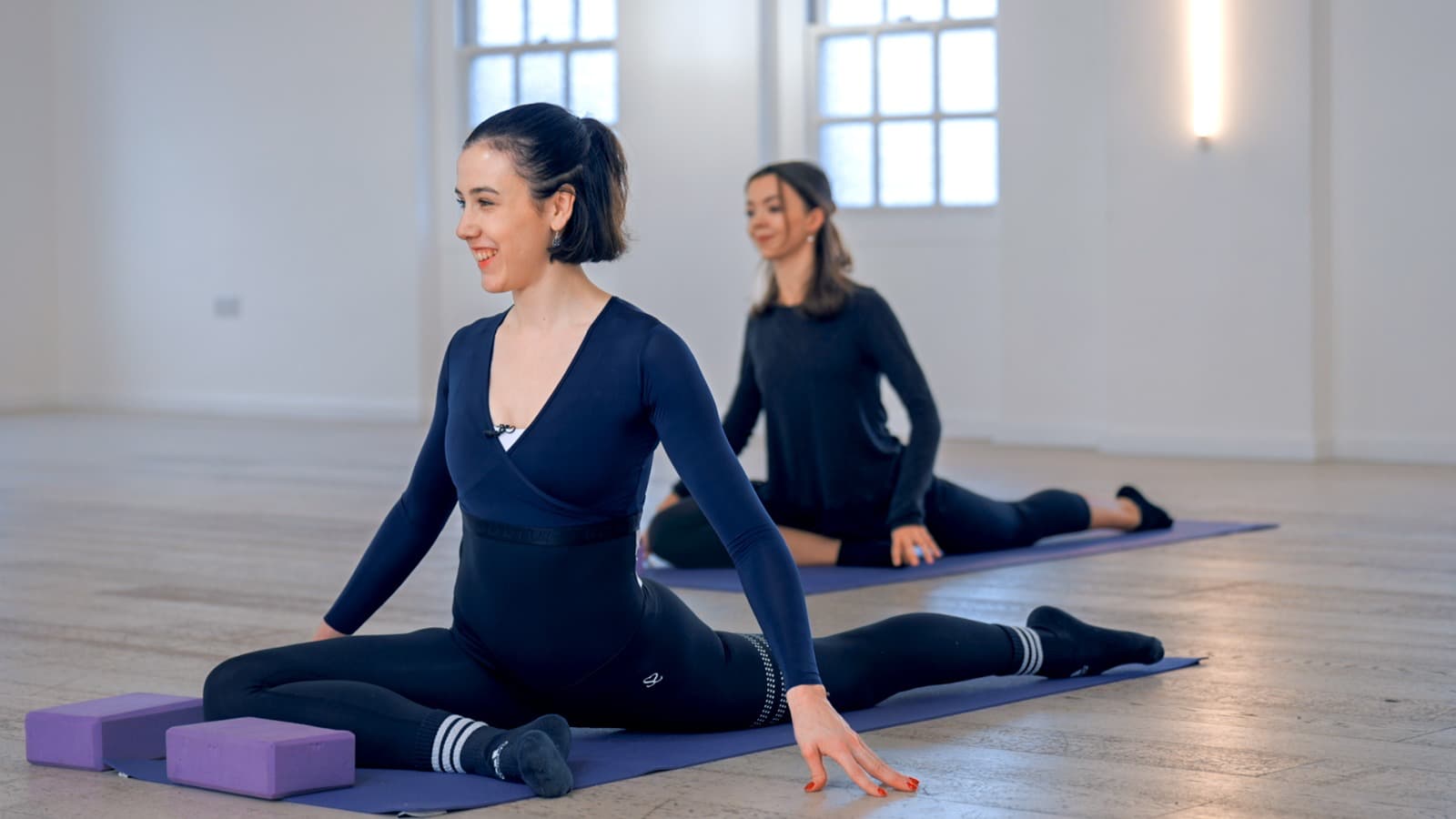Core strength is essential for ballet dancers of all levels, including beginners, as it plays a vital role in developing proper alignment, balance, and control in movement. The core muscles, which include the abdominals, back muscles, and hips, work together to provide stability and support to the spine and pelvis during movement.
Why core exercises are essential for ballet dancers
Having a strong core will give you the ability to be freer in your movements, have more control, and be able to move quicker. Think of the core as the “powerhouse of the body”- without a strong core, it’s impossible to control your body effectively and to execute extreme movements.
For beginner ballet dancers, having a strong core is particularly important as you are learning fundamental techniques such as turnout and proper alignment. Without adequate core strength, beginners may struggle to maintain proper posture and control during exercises, leading to inefficient movement and potential injury.
Moreover, a strong core also helps improve the execution of more advanced movements such as jumps, turns, and lifts, which require a great deal of stability and control. Developing core strength through specific exercises such as planks, crunches, and bridge pose can help beginners to enhance their performance and technique and progress to more advanced levels of ballet.
Use the right technique throughout all ballet core workouts
Without the right technique, core exercises are far less effective and can aggravate or cause strain or injury. Here are some tips for maintaining proper form and alignment during core exercises:
- Engage your core: Before starting any exercise, engage your core muscles by pulling your belly button in towards your spine. This will help you maintain proper form and alignment throughout the exercise.
- Keep your spine neutral: Avoid arching or rounding your back and keep your spine in a neutral position. This will help you avoid strain or injury to your back.
- Relax your neck and shoulders: Keep your shoulders down and relaxed and avoid tensing your neck muscles. This will help you avoid strain or injury to your neck.
- Breathe: Remember to breathe deeply and steadily throughout the exercise. Exhale as you exert effort, and inhale as you relax.
- Focus on slow, controlled movements: Avoid using momentum or jerky movements to perform the exercise. Instead, focus on slow, controlled movements that engage your core muscles.
- Use proper equipment: If using equipment, such as a stability ball or resistance band, make sure it is properly inflated or adjusted to your height and weight.
- Modify as needed: If an exercise feels too difficult, modify it by decreasing the range of motion or reducing the intensity. Conversely, if an exercise feels too easy, increase the range of motion, or add resistance.
Remember that proper form and alignment are key to getting the most benefit from your core exercises, and to avoiding injury. If you are unsure about proper form, consider working with a qualified fitness professional who can help you learn correct technique.
The best core exercises for ballet dancers
Add these exercises to your workout and you’ll soon see great results!
Planks: Planks help to strengthen the muscles in your core, back, and shoulders. They also improve posture, balance, and stability which is crucial for ballet dancers.
Instructions: Start in a push-up position on the floor, with your hands directly under your shoulders and your toes touching the ground. Lower your forearms to the floor so that your elbows are directly beneath your shoulders, so your body forms a straight line from your head to your heels. Make sure your hips don’t sag or stick up too high. Hold for 30 seconds to 1 minute.
Crunches: Crunches target the rectus abdominis muscle (the ‘6-pack muscles), which is important for developing a six-pack. However, it is also important for supporting the spine and providing stability in movements that require rotation or flexion of the trunk.
Instructions: Lie flat on your back on a mat or comfortable surface with your knees bent and feet flat on the floor. Place your hands behind your head or across your chest, making sure not to pull on your neck. Tighten your abdominal muscles and lift your upper body off the floor, using your abs to curl your shoulders towards your knees. Pause for a moment when you’ve lifted your shoulder blades off the ground, then slowly lower your upper body back down to the starting position. Don’t let your head drop down to your chest or arch your back during the exercise. Exhale as you lift up and inhale as you lower back down.
Leg lifts: Leg lifts help to strengthen the lower abdominal muscles, which are essential for maintaining proper alignment in the pelvis and lower spine. This can prevent injury and improve balance and stability in ballet movements.
Medicine ball twists: Medicine ball twists are a great exercise for improving rotational strength and stability in the core. This is important for many ballet movements that require twisting or turning.
Instructions: Sit on the floor with your knees bent and feet flat on the ground. Hold a medicine ball or weight with both hands at chest level. Lean back slightly, engaging your abs to maintain balance. Rotate your torso to the right, bringing the medicine ball to your right hip. Your feet and hips should remain stationary. Pause briefly, then rotate your torso to the left, bringing the medicine ball to your left hip. Keep your feet and hips stable throughout the exercise and use your oblique muscles to rotate your torso. Exhale as you twist and inhale as you return to the starting position.
Reverse Crunches – This will target your lower abdominal muscles, as well as the upper abs, obliques, and hip flexors.
Instructions: Lie on your back, bend your knees, and place your hands behind your head or across your chest, making sure not to pull on your neck. Lift your legs off the ground at the same time in a controlled, slow movement. Slowly curl your hips towards your chest and return to the starting position.
Bicycle Crunches – Here, your hip flexors and lower back muscles get a workout along with your stomach muscles.
Instructions: Lie on your back with your knees bent. Place your hands behind your head, but don’t pull on your neck. Lift your shoulders off the floor and bring your left knee towards your chest while extending your right leg straight out at a 45-degree angle. Twist your torso to the left, bringing your right elbow towards your left knee. Switch sides, bringing your right knee towards your chest and your left elbow towards your right knee, while straightening your left leg. Continue alternating sides, moving your legs in a bicycle-pedalling motion while twisting your torso to the opposite side. Reach your right elbow to your left knee, then switch to the other side.
Side Plank – This is a more strenuous workout for the deep muscles in your side that stabilise your spine. By holding your muscles in an isometric contraction, you will improve core stability and balance.
Instructions: Lie on your side on a mat or comfortable surface, with your legs straight and your feet stacked on top of each other. Prop yourself up on your elbow, with your forearm perpendicular to your body and your hand flat on the ground. Tighten your core muscles and lift your hips off the ground, creating a straight line from your head to your feet. Keep your body straight and avoid letting your hips sag or rotate forward. Hold this position for 20-30 seconds, or longer if you can. Lower your hips back down to the ground and switch to the other side.
Dead Bug – Not only is this a great isometric core exercise, but it’s also a good way to exercise without straining your back Lie on your back, raise your legs and arms, and lower your opposite arm and leg. Hold for a few seconds each time while you alternate sides.
Instructions: Lie on your back with your arm pointed up to the ceiling and lift your legs to a 90-degree angle with your knees bent. Tighten your core muscles and slowly lower your right arm and left leg towards the floor, keeping them hovering above the ground, without touching it. Pause briefly, then bring your arm and leg back up to the starting position. Repeat the movement on the opposite side, lowering your left arm and right leg towards the floor. Focus on keeping your lower back pressed firmly against the ground throughout the exercise and avoid arching your back. Exhale as you lower your arm and leg, and inhale as you return to the starting position.
Bridge – Our glutes are one of the strongest, hard-working muscles in our body, supporting balance and stability, and this exercise will help make your lower back, glutes, and hip muscles more effective.
Instructions: Lie on your back with your knees bent and feet flat on the floor. Place your arms by your sides with your palms facing down. Engage your core muscles and press your feet into the ground to lift your hips up towards the ceiling. Keep your knees directly over your ankles, and your thighs parallel to each other. Roll your shoulders back and underneath your body, clasping your hands together if you can. Hold the position for 30 seconds to 1 minute, or longer if you can.
Remember to focus on proper form and alignment during these exercises, and gradually increase the difficulty as your core strength improves.




